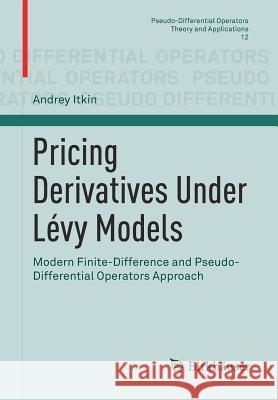Pricing Derivatives Under Lévy Models: Modern Finite-Difference and Pseudo-Differential Operators Approach » książka
topmenu
Pricing Derivatives Under Lévy Models: Modern Finite-Difference and Pseudo-Differential Operators Approach
ISBN-13: 9781493967902 / Angielski / Miękka / 2017 / 308 str.
Pricing Derivatives Under Lévy Models: Modern Finite-Difference and Pseudo-Differential Operators Approach
ISBN-13: 9781493967902 / Angielski / Miękka / 2017 / 308 str.
cena 321,26
(netto: 305,96 VAT: 5%)
Najniższa cena z 30 dni: 308,41
(netto: 305,96 VAT: 5%)
Najniższa cena z 30 dni: 308,41
Termin realizacji zamówienia:
ok. 22 dni roboczych
Dostawa w 2026 r.
ok. 22 dni roboczych
Dostawa w 2026 r.
Darmowa dostawa!
Kategorie:
Kategorie BISAC:
Wydawca:
Springer
Seria wydawnicza:
Język:
Angielski
ISBN-13:
9781493967902
Rok wydania:
2017
Wydanie:
2017
Numer serii:
000364328
Ilość stron:
308
Waga:
0.57 kg
Wymiary:
17.2 x 24.7 x 2.1
Oprawa:
Miękka
Wolumenów:
01
Dodatkowe informacje:
Bibliografia
Glosariusz/słownik
Wydanie ilustrowane
Glosariusz/słownik
Wydanie ilustrowane











